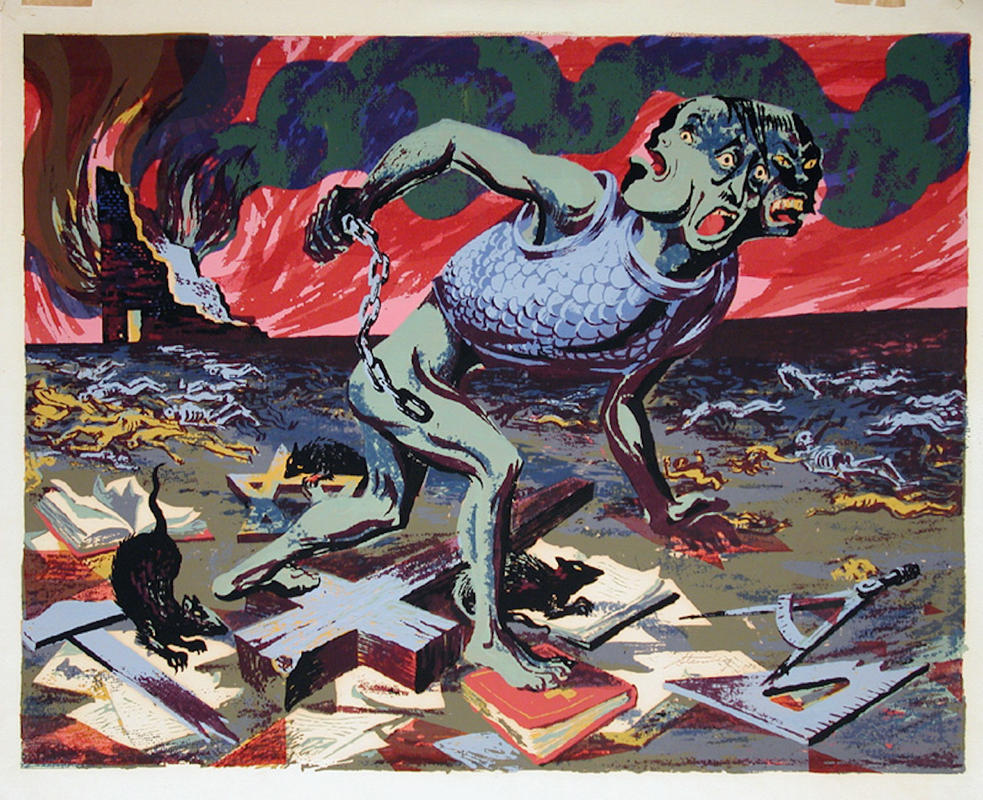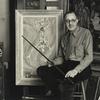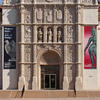More about Fascism

Contributor
At the time Fascism was made, FDR’s second phase of the New Deal was well underway.
The Works Project Administration, the largest program social welfare program ever made under the New Deal, had brought jobs to 8.5 million Americans at the cost of $11 billion. One wing of the WPA, the Federal Arts Project, employed artists in the creation of work for public buildings, and it was where Sternberg met many other artists who, despite being politically opposed, shared a common idea: that fascism needed to be stopped.
Sternberg was very politically active and never afraid to show it, taking part in numerous demonstrations in the late 1930s. A member of the American Artists’ Congress, he was vehemently against authoritarian powers, especially those of Nazi Germany, Fascist Italy, and Imperial Japan. In fact, the three faces that the monstrous giant wears belong to Hitler, Mussolini, and Hirohito respectively. Sternberg had more than just personal belief as motivation: a majority of his family was of Hungarian Jewish descent, most of whom died in the Holocaust as a result of Nazi dominion.
Lucky for him, the war officially ended two years later in the Allies’ favor with two atom bombs and an unceremonious suicide to top it off. It would have been more of a story to tell (and much less morally questionable) if it went the way it did in "Inglorious Basterds."
Elsie Donaldson, the previous owner of the painting, was a painter and lithographer. She studied at the Art Institute of Chicago and was employed by the WPA, much like Sternberg was. She moved to San Diego in 1940 and died four years later, in La Jolla. The piece was donated after her death and has been at the San Diego Museum of Art ever since.
Sources
- Britannica, The Editors of Encyclopaedia. "Works Progress Administration." Encyclopædia Britannica. February 28, 2018. Accessed November 21, 2018. https://www.britannica.com/topic/Works-Progress-Administration.
- “Elise Donaldson.” n.d. Askart.com. Accessed January 23, 2019. http://www.askart.com/artist/Elise_Donaldson/5014664/Elise_Donaldson.as….
- "Fascism." San Diego Museum of Art - Man and Woman. Accessed November 21, 2018. http://collection.sdmart.org/Obj1307?sid=15052&x=48130&port=2907.
- "The Rise of Fascism." Art & Social Issues in American Culture. Accessed November 21, 2018. http://artandsocialissues.cmaohio.org/web-content/pages/war_sternberg.h….
- Yard, Sally. "Oral History Interview with Harry Sternberg, 1999 March 19-2000 January 7." Archives of American Art, Smithsonian Institution. Accessed November 21, 2018. https://www.aaa.si.edu/collections/interviews/oral-history-interview-ha…











